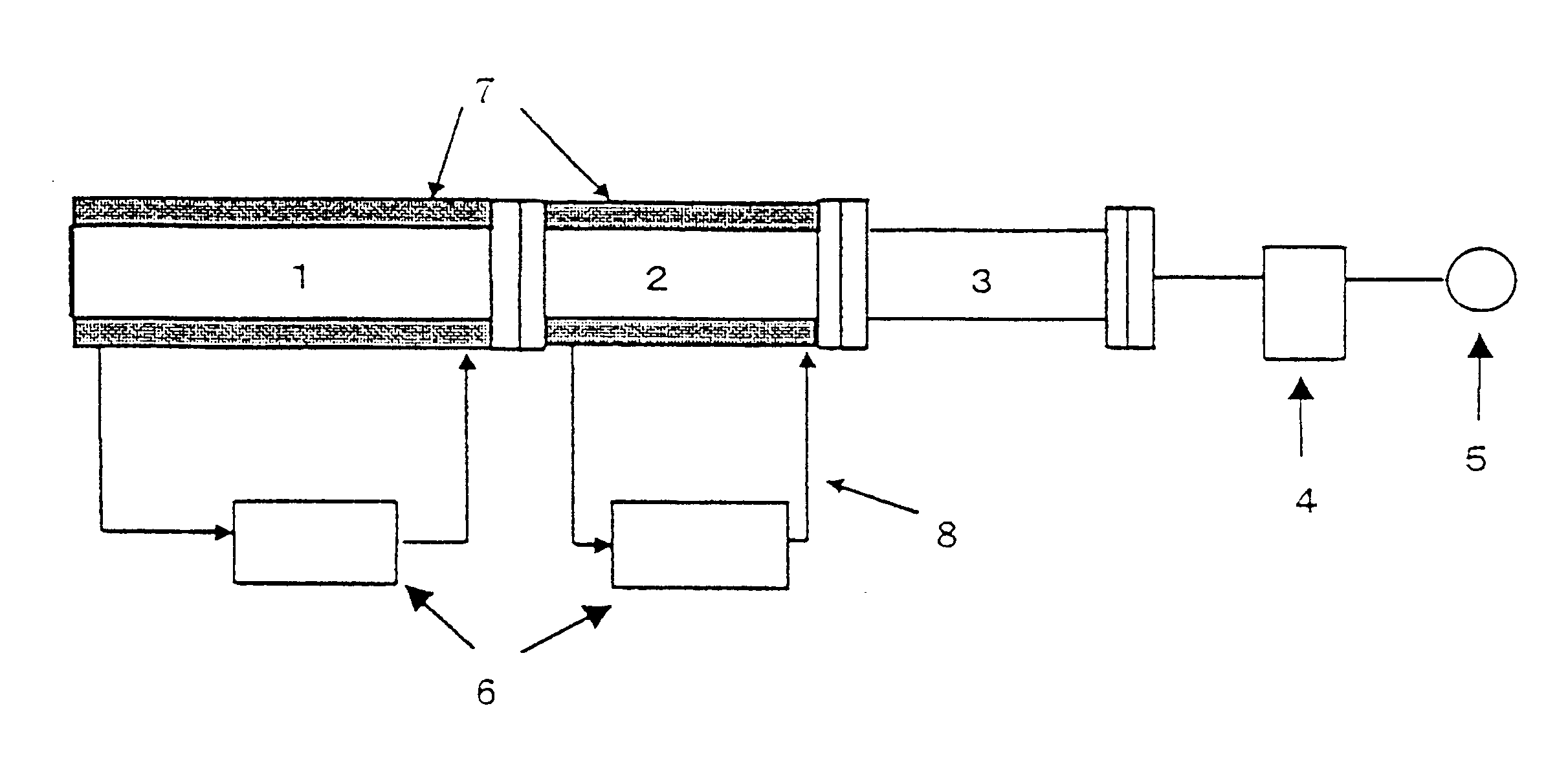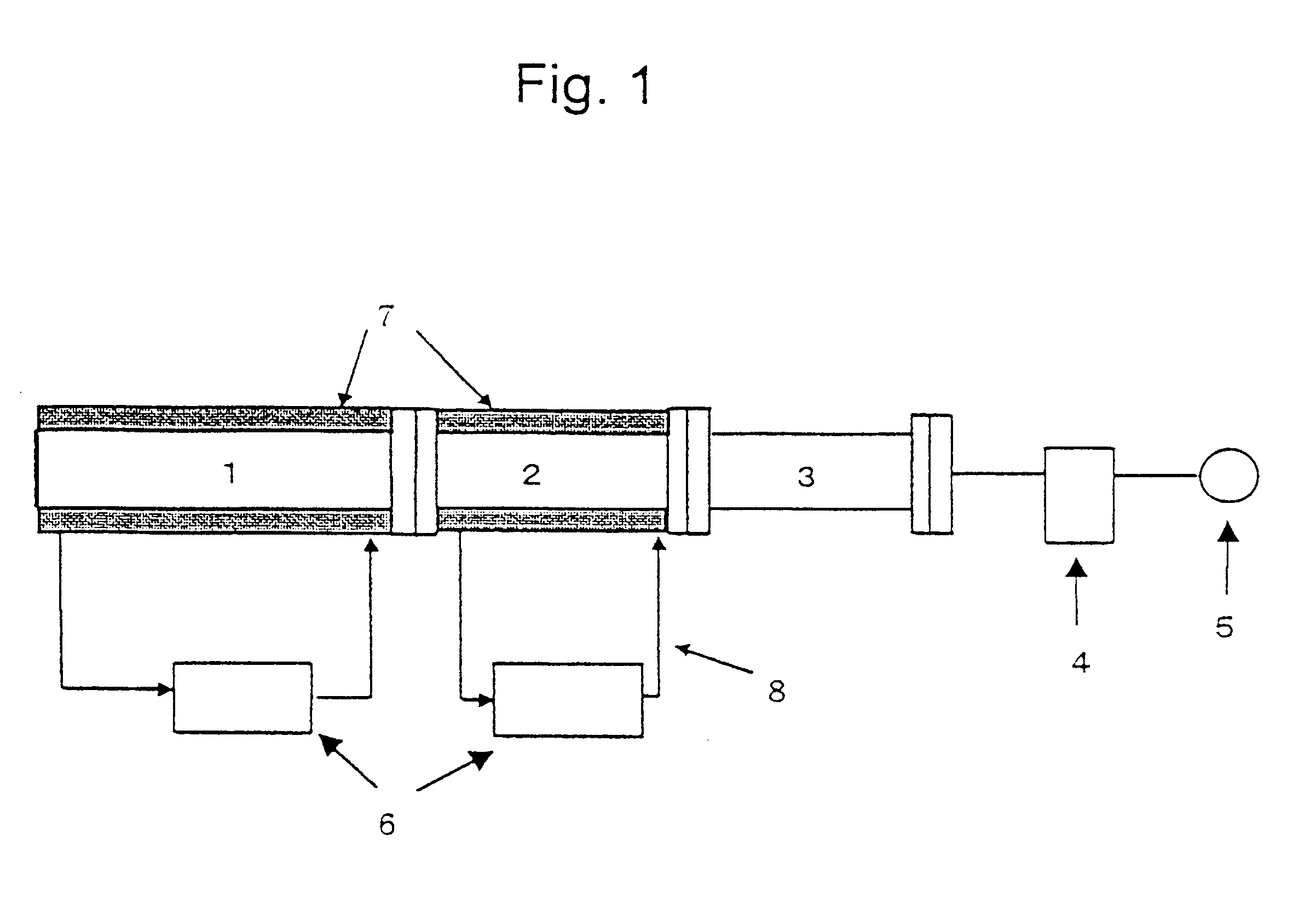Organic el material
a technology of organic el and el, which is applied in the field of tris (8quinolinolato) aluminum, can solve the problems of not publishing a quantitative report on the quantitative impact of isomers on the performance of organic el devices, the difficulty of preparing or isolating only one of the two isomers, and the difficulty of quantitatively small structural changes (intramolecular and intermolecular) of the complex
- Summary
- Abstract
- Description
- Claims
- Application Information
AI Technical Summary
Benefits of technology
Problems solved by technology
Method used
Image
Examples
example 1
To 93 g of water were added 25 g of aluminum sulfate hexadecahydrate and 35 g of 99% pure 8-hydroxyquinoline and the mixture was neutralized by dropwise addition of 29 g of a 33% solution of sodium hydroxide with stirring and allowed to react. The solid formed was collected by filtration, washed with water and dried to give 36 g of Alq3.
The raw material Alq3 (20 g) thus obtained was refined by sublimation with the use of the apparatus illustrated in FIG. 1. The sublimation zone 1 and the product recovery zone 2 are constructed of a metallic cylinder and each zone is heated or cooled by a heat transfer medium and the temperature of each zone is controlled independently. The second zone 3 was cooled by air. The system was evacuated to 2 Torr by the vacuum pump 5 and the raw material was sublimated for 3 hours to collect a solid substance on the inner surface of the recovery zone while maintaining the temperature in the sublimation zone 1 at 400.degree. C., the temperature of the inner...
example 2
As in Example 1, 22.7 g of ammonium alum and 21.8 g of 8-hydroxyquinoline were added to 150 g of water and the mixture was neutralized by dropwise addition of 6.5 g of a 33% solution of sodium hydroxide with stirring and allowed to react. The solid formed was washed with water and dried to give 21 g of Alq3. The raw material Alq3 thus prepared was refined in the metallic apparatus for refining by sublimation illustrated in FIG. 1 to give 11 g of refined Alq3.
The raw material Alq3 prepared in Example 2 was refined by repeating sublimation three times in the same glass apparatus as in Comparative Example 1 to give 1.7 g of refined Alq3. The FT-IR spectra and DSC curves of refined Alq3 obtained in Example 2 and Comparative Example 2 are shown in FIGS. 6-9. FIG. 6 is the FT-IR spectrum of Alq3 obtained in Example 2 and shows a peak at 422 cm.sup.-1 and no peak at 418.+-.2 cm.sup.-1, whereas FIG. 8 is the FT-IR spectrum of Alq3 obtained in Comparative Example 2 and shows a peak at 419 cm...
example 3
The raw material Alq3 was prepared as in Example 1, 10 g of the raw material was introduced to the same metallic apparatus for refining by sublimation as in Example 1 and the refining experiment was repeated 10 times at 2 Torr for 3 hours while keeping the temperature in the sublimation zone at 380.degree. C. and that in the product recovery zone at the set temperature of 150.degree. C. The results of DSC analysis (amount of sample, approximately 10 mg) of the refined product are shown in Table 1. None of the samples showed a well-defined exothermic peak in the range of 350-400.degree. C. and each showed an endothermic peak of 85-97 J / g with the maximum of the endothermic peak being located near 420.degree. C.
PUM
 Login to View More
Login to View More Abstract
Description
Claims
Application Information
 Login to View More
Login to View More - R&D
- Intellectual Property
- Life Sciences
- Materials
- Tech Scout
- Unparalleled Data Quality
- Higher Quality Content
- 60% Fewer Hallucinations
Browse by: Latest US Patents, China's latest patents, Technical Efficacy Thesaurus, Application Domain, Technology Topic, Popular Technical Reports.
© 2025 PatSnap. All rights reserved.Legal|Privacy policy|Modern Slavery Act Transparency Statement|Sitemap|About US| Contact US: help@patsnap.com



